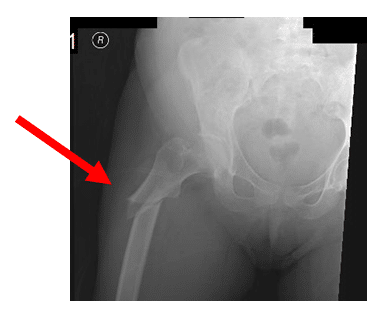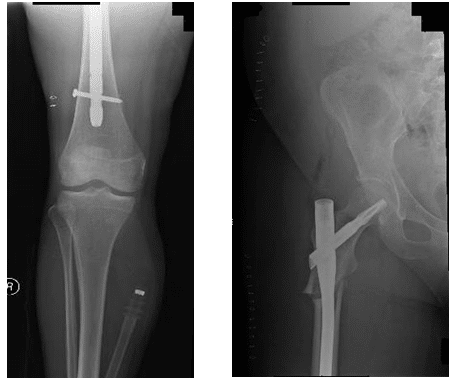Patient is a 65 year old woman who came in with a right femur Fosamax fracture. Patient also has a history of osteoporosis and has been on Bisphosphonates for an extended period of time. Chronic Bisphosphonate use can often cause bone turndown, which is a common cause of Fosamax fractures. It is typical in Fosamax fractures for the fracture to be subtrochanteric and for there to be thickening of the cortex.
In this case, the patient’s fracture is “beaking,” as shown by the arrow. There is also no bone turnover, which can lead to “Frozen Bone Syndrome”, making this particular fracture difficult to heal. For treatment of the fracture the patient underwent an Open Reduction Internal Fixation (ORIF) with augmentation, using bone morphogenic proteins.

X-Ray shows a right femur oblique subtrochanteric fracture with lateral angulation.


Post-Operative X-Rays show an Open Reduction Internal Fixation (ORIF) of the Right Femur.
X-Rays show an intramedullary rod extending from the greater trochanter, through the proximal femoral fracture, to the distal shaft of the femur where there is a horizontal screw.
Upon follow-up, patient presented with minimal discomfort or pain, had good range of motion at the hip and knee, and is weight bearing as tolerated. Patient was also given Forteo, which is an anabolic bone agent that increases bone formation. Patient has been doing well subsequently.
*Patient identifiers and dates changed to protect patient privacy.





